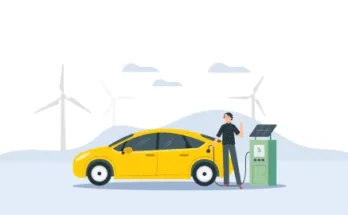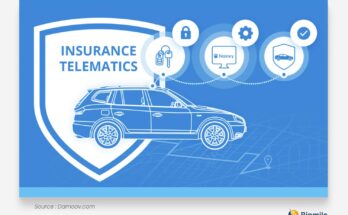Introduction
As we enter 2025, auto insurance policies and regulations are evolving rapidly. The auto insurance industry is seeing significant changes, driven by new laws that focus on transparency, fairness, and the introduction of cutting-edge technologies like telematics and autonomous vehicles. Understanding these new laws is crucial for consumers who want to ensure that they’re adequately covered and benefiting from the latest insurance options available. In this post, we’ll dive deep into the regulations and laws shaping the future of auto insurance in 2025.
Key New Laws and Regulations Affecting Auto Insurance
Usage-Based Insurance (UBI) Becomes Standardized
One of the major developments in auto insurance is the rise of Usage-Based Insurance (UBI), which calculates premiums based on how much or how safely you drive. With the advent of telematics and smart devices, more states are regulating UBI to ensure that consumers are treated fairly and that their data is kept private.
What This Means for Drivers:
- Drivers who use UBI programs will see their premiums based on their driving habits (such as speed, distance, and braking patterns), allowing safe drivers to save on their premiums.
- Insurers will now be required to disclose how they collect and use this data, including the duration of storage, which ensures that privacy is respected.
Enhanced Consumer Protection Laws
Consumer protection continues to be a priority in 2025. New laws are designed to ensure that consumers fully understand their policies and receive a fair resolution in case of disputes. Insurance companies will now be obligated to provide clear explanations of coverage options and exclusions, making it easier for policyholders to make informed decisions.
What This Means for Drivers:
- Clearer terms: Expect your policy to be explained in a more transparent and accessible way.
- Faster claims: New regulations may enforce quicker response times, reducing delays in claim settlements and payouts.
- Protection from non-renewals: It will be harder for insurers to drop coverage or raise premiums without clear, justifiable reasons.
Stricter Data Privacy Regulations
As the use of telematics grows, so does the amount of data being shared between vehicles and insurers. In response, new data privacy laws will protect consumer information more rigorously. These regulations will define how insurers collect, store, and use data gathered from vehicles equipped with smart devices and telematics.
What This Means for Drivers:
- More control over your data: Insurers will need your explicit consent before collecting or sharing driving data.
- Transparency: You will have access to the data collected about you and how it affects your premiums.
- Protection from third-party sharing: Insurers will be restricted in how they share your data with third-party marketers or researchers.
How These Laws Will Impact Your Auto Insurance Premiums
Environmental Incentives and Green Vehicle Discounts
The shift toward environmental sustainability continues in 2025. Many states are incentivizing the use of electric vehicles (EVs) and hybrids through tax credits and rebates, and insurers are beginning to adjust their pricing models to reflect these changes.
What This Means for Drivers:
- If you drive an electric or hybrid vehicle, expect to see discounts or lower premiums. Insurers view green vehicles as lower-risk due to fewer accident claims and cheaper repair costs.
- These laws may require insurers to offer incentives for environmentally friendly cars, helping drivers save on premiums.
Premium Transparency and Regulation
In 2025, expect more regulations around how insurers calculate premiums. These rules will demand greater transparency in the factors that influence your insurance rates, from driving history to the location of your home. Insurers will have to provide clear breakdowns of how premiums are set, so customers are more aware of the factors influencing their costs.
What This Means for Drivers:
- You will have more visibility into how your rate is calculated, making it easier to shop for the best rates.
- Premium increases will be more regulated, and there will be limits on how much insurers can raise rates in one year.
The Claims Process: What to Expect in 2025
Faster Claims and Automated Payouts
The claims process is also set for major improvements in 2025. New laws may require insurers to streamline the claims process, ensuring faster response times and more efficient payouts. Automated claims handling will become the norm, with insurers using artificial intelligence (AI) and data analytics to speed up the evaluation process.
What This Means for Drivers:
- Expect quicker claim processing, with some insurers offering instant payouts based on predefined criteria.
- Automated systems will help reduce errors and delays, ensuring that the claims process is more straightforward and user-friendly.
New Dispute Resolution Mechanisms
If you disagree with a claim outcome or feel your premium is unjust, new dispute resolution laws will help you resolve issues more quickly. Many states are introducing faster, more accessible ways to address disputes outside of the courtroom, such as through arbitration or online mediation.
What This Means for Drivers:
- If you have a claim dispute, it will be easier and quicker to resolve, avoiding long and costly court battles.
- Alternative dispute mechanisms will provide a fair, impartial way to settle disagreements with insurers.
How Autonomous Vehicles Will Impact Auto Insurance
New Insurance Guidelines for Autonomous Vehicles
Autonomous vehicles (AVs) are becoming a significant presence on the roads, and new regulations are emerging to address the unique challenges posed by self-driving cars. In 2025, insurers will face a wave of new requirements surrounding AV liability, coverage, and claims.
What This Means for Drivers:
- The car manufacturer might assume some liability in the event of an accident caused by a vehicle’s autonomous system, while the insurer would cover other aspects, like vehicle damage or passenger injury.
- New insurance policies for AVs will likely become available, including coverage tailored to self-driving technology.
Liability and Risk Assessment for AVs
As autonomous technology evolves, insurance companies will need to adjust their risk models. Insurers will be required to create new policies and data models to evaluate risks associated with AVs, which will consider how the vehicle’s autonomous system operates under different conditions.
What This Means for Drivers:
- Expect new types of coverage designed specifically for autonomous vehicles.
- Insurers may use more advanced data models to assess risk, considering factors like vehicle automation, weather conditions, and potential system failures.
Preparing for Changes in 2025
Review Your Insurance Policy
Given all the new laws and regulations, now is the time to review your auto insurance policy. Ensure it reflects the latest requirements, whether you’re driving an electric vehicle, considering a move to a state with new data privacy laws, or purchasing an autonomous vehicle.
Actionable Steps:
- Discuss potential discounts with your insurer if you own a hybrid or electric vehicle.
- Consider opting into a Usage-Based Insurance program if you drive less or maintain a safe driving record.
- Verify that your insurance policy complies with new transparency and data protection regulations.
Stay Informed About Local Laws
Insurance laws vary from state to state, so it’s important to keep up with changes in your local area. Each state may implement different timelines and procedures for these new regulations, and being informed will help you stay compliant and prepared.
Actionable Steps:
- Check with your state’s insurance department for updates on local regulations.
- Ask your insurance provider how these new laws may impact your premiums, coverage, and claims process.
Consider Alternative Coverage Options
As 2025 rolls out, insurers may offer new and innovative coverage options tailored to modern driving conditions. These options could include specialized coverage for electric vehicles, autonomous vehicle protection, or even cyber protection for connected vehicles.
Actionable Steps:
- Explore emerging coverage options, especially if you own an electric or autonomous vehicle.
- Talk to your insurer about possible coverage changes and upgrades that align with the latest laws.
Conclusion
As we enter 2025, new laws and regulations are reshaping the auto insurance industry. From usage-based insurance and enhanced consumer protection to autonomous vehicle coverage and data privacy concerns, these changes aim to improve transparency, fairness, and efficiency. By staying informed and reviewing your policy regularly, you can ensure that you’re fully prepared for these changes, protecting yourself and your vehicle while benefiting from the latest industry developments. Whether you’re a traditional driver or adapting to new technologies, understanding these evolving regulations is key to navigating the future of auto insurance.





